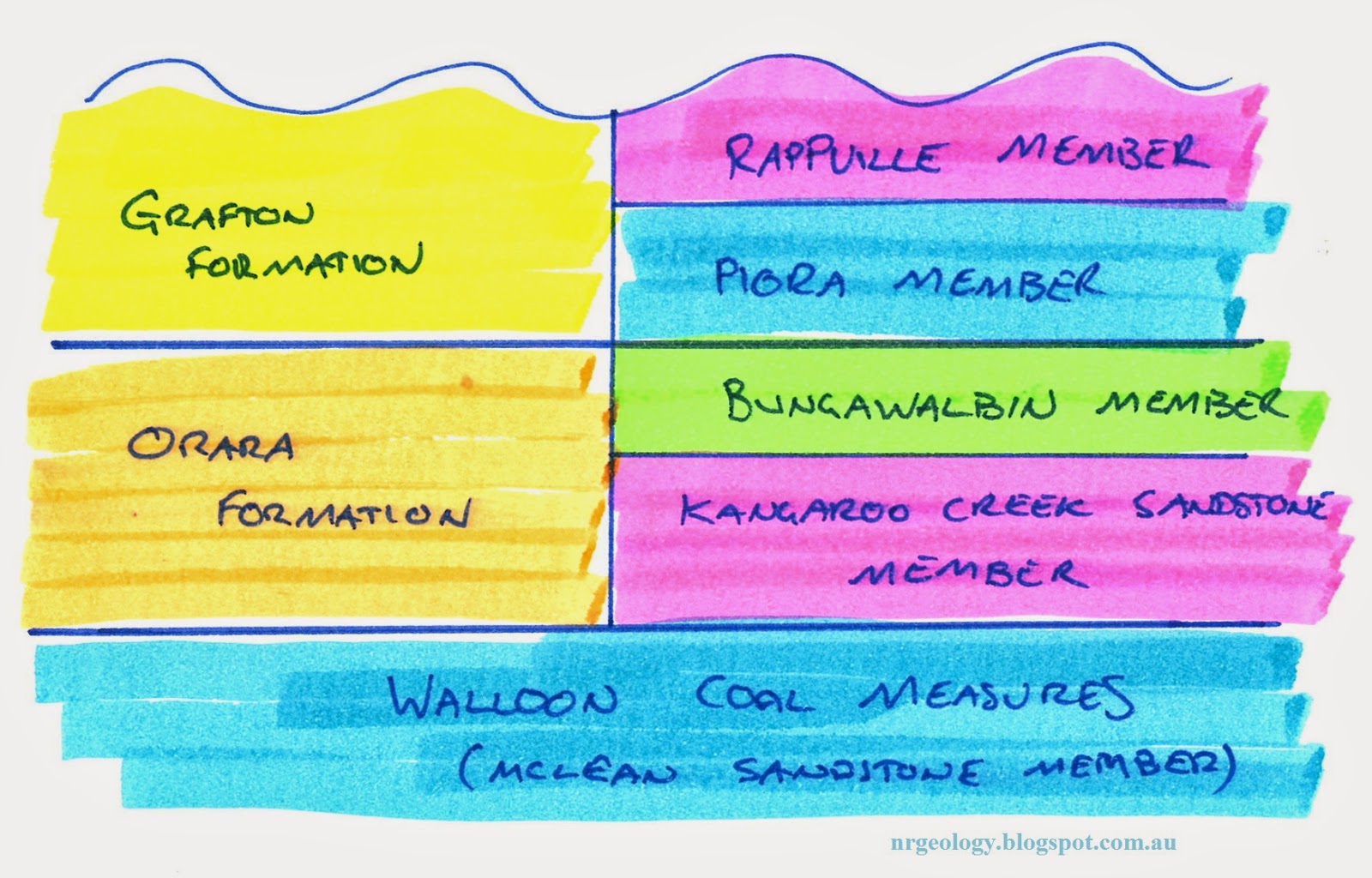A CSIRO researcher recently provided me with a copy of a conference paper on the Clarence-Moreton Basin that I have been searching for (Doig & Stanmore 2012). I was looking for this information for quite some time as I thought there was much to be learned from it. This is because the research was based upon coal seam gas (CSG) exploration results. It did not disappoint me at all. I have previously blogged on the stratigraphy of the basin but frequent visitors will be aware that there has been a hiatus on this topic. This is because I knew more information had been compiled as a result of gas exploration in the region. In particular this was to do with the Grafton Formation and Kangaroo Creek Sandstone. You can read my previous posts but note that Doig & Stanmore (2012) propose to reclassify these units (see figures 1 and 2 on this post). The information my previous posts were based upon Wells and O’Brien (1994). This is still the most comprehensive guide to the basin but now there is potentially some significant refinements.
 |
Interpretation of the stratigraphy of the upper sequences of the Clarence-Moreton Basin
after Wells & O'Brien (1994) and Willis (1994) |
Doig & Stanmore (2012) noted that CSG exploration drilling has provided important clues to the layers that make up the Clarence-Moreton basin that were inferred only through limited field exposure. Drilling provides a nice continuous profile which can be compared to other drill holes and to outcropping information. In the case of Doig & Stanmore (2012) this has completely redrawn the stratigraphy of the upper Clarence-Moreton Basin.
 |
| Reviewed Clarence-Moreton Basin stratigraphy after Doig & Stanmore (2012) |
I will go into more detail in future posts but I note that Doig & Stanmore (2012) have made some major changes to the Grafton Formation. In particular, they have identified two new distinct members of the formation. The Piora Member and the Rappville Member. As for the underlying Kangaroo Creek Sandstone, this spatially and significant unit has been demoted simply to a member of a newly proposed formation called the Orara Formation. The Orara Formation itself has two distinct formations the demoted Kangaroo Creek Sandstone Member and the new Bungawalbin Member. (See figure 2).
The Woodenbong beds don’t get a guernsey at all in this paper. I suspect that this is because it would better fit into either the Bungawalbin Member of the Kangaroo Creek Sandstone or the Piora Member of the Grafton formation. More work needs to be carried out to make it more certain.
Clearly we do not understand much about the Clarence-Moreton Basin. Even the shallowest geological components! Knowledge keeps improving the more people investigate. The paper provides further interest because identification of the stratigraphic units and geochemical data obtained provide an indication of the risk associated with groundwater resources and CSG production. So as usual, further blog posts are required.
References/bibliography:
*Doig, A. & Stanmore, P. (2012). The Clarence-Moreton Basin in New South Wales; geology, stratigraphy and coal seam gas characteristics. Paper presented at the Eastern Australian Basins Symposium IV, Brisbane.
*Wells, A.T. & O’Brien (1994). Geology and Petroleum Potential of the Clarence-Moreton Basin, New South Wales and Queensland, Australian Geological Survey Organisation, Bulletin 241.


No comments:
Post a Comment